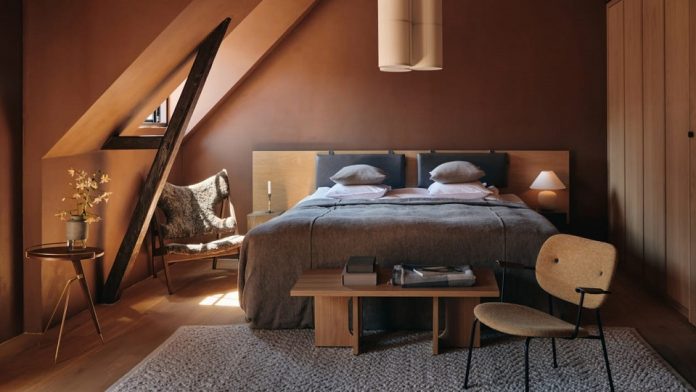In June 2022, PlanRadar conducted a research project into future trends, priorities and strategies for architecture and interior design according to leading industry voices in 12 countries. The questions were separated into three sections: the architecture of the future, the future of offices and homes of the future.
What did the research reveal?
As any experienced developer, architect or interior design professional knows, people’s expectations for their ‘dream’ homes are far from static. A wide range of factors influence our ever-changing tastes, from major events such as the global pandemic, through to the emergence of new technologies, climate change, as well as interior design marketing, social media home influencers and popular culture. By keeping an ear to the ground and learning about these different trends and what they mean for your practice, you can ensure your designs match up with your customers’ desires.
To that end, this research can provide a useful starting point for discussions about your company’s strategy. Here are some of the key findings from our study:
Home as a workplace
One of the biggest consequences of the coronavirus pandemic is that homes are now increasingly being viewed as a workspace. Millions of homeowners and renters are looking for homes with studies, where they can work uninterrupted by family life. When this isn’t possible, they want flexible furniture that allows them to turn certain rooms into offices during the day, before transforming them back to kitchens, lounges or bedrooms after work.
7 out of the 11 countries that answered this question consider multi-functional spaces to be an up and coming trend in housing. These countries include the US, UK, Germany, Austria, Slovakia, Italy and the UAE. Meanwhile 5 countries state that dedicated home offices will be a key trend for the future, including the US, UK, Germany, Austria and France.
Sustainability is more important than ever
People are increasingly concerned by the ongoing climate crisis, and our research revealed just how much of a priority sustainability is. People want homes and interiors designed using sustainable materials, not to mention things like passive housing (highly insulated homes that are heated or cooled with minimal energy).
Germany, France and Czechia are focused on biomaterials, while Austria, France and the UAE also want their spaces to look and feel as sustainable as they are. Meanwhile, the UK expressed a specific preference for Passivhaus design and the US was uniquely concerned about providing charging points for electric vehicles.
Outdoor space
During the coronavirus pandemic and its associated lockdowns, millions of people were forced to spend months inside their homes, with limited opportunities to spend time outside. This clearly had an impact on people’s approach to residential design. Our research indicates that people in the US, UK and Italy are particularly interested in having some form of outside space directly accessible from their homes. This doesn’t necessarily need to mean a private garden – many express an interest in communal outdoor space.
Meanwhile, France, Czechia and Slovakia are particularly concerned with increasing the amount of natural light inside homes. Finally, one of the top trends was biophilic design, which can bring the sensation of outdoors to interiors via a range of plants. Austria, Spain, Czechia, Slovakia, Italy, Poland and the UAE were all interested in biophilic home design.
Shared and communal spaces
Across several countries, there also seems to be a growing appetite for shared or communal spaces. This might be a response to the isolation of lockdown, or it could be a response to the increased cost of living. In countries where it is expensive for young people to rent or buy their own homes, or where retirement facilities are expensive, co-living arrangements may be on the rise.
The US and UK are both interested in homes that facilitate community-based or multi-generational living arrangements. For other nations, multi-generational living might be ingrained in the local culture, or at least not hold as much stigma. Meanwhile, Austria and France are both open to having more communal living areas in their accommodation.
Shifts in furniture
Some of the trends highlighted above, feed through to people’s tastes in furniture. To accommodate work from home, many people are now interested in fold-out desks where they can store their computers at night, then fold them out to work during the day. Our findings also showed that people are interested in ergonomic seating at home – no doubt related to the growth in home working.
People are clearly concerned about the impact of furniture on the environment too. 9 out of the 12 counties surveyed plan for their furniture to be made from recycled, sustainable or naturally-sourced materials. 4 countries (Germany, Austria, France and Hungary) also showed an interest in locally sourced furniture. This supports both sustainability efforts and allows retailers to avoid delays in the supply chain as have been experienced during COVID-19.
The smart home
Thanks to technological advances, it is now increasingly possible to design and live in smart homes, kitting out properties with voice activated gizmos and AI-powered devices. These are all meant to make our homes more comfortable, easy to manage and secure – while also saving people money. Our findings revealed that people around the world are open to a variety of smart technologies, with advanced lighting systems, smart thermostats and smart home security the clear winners in terms of preferred technologies.
The US and France were the countries most interested in smart home technology, expressing confidence in the uptake of 14 out of the 24 technologies listed.
Far from a uniform picture
Although our research highlighted several trends which are visible in countries around the world, it also showed how different cultures prioritise very different things, and have their own unique tastes. For instance, the USA was the only place interested in social companionship robots and increased exercise space in homes, Germany is the only country expressly interested in self-cleaning surfaces and antibacterial materials and Austria is uniquely intrigued by the possibility of 3D-printed furniture.
There are a lot of predictions out there – and most of them don’t have a great deal of consensus. So we can probably expect homes to continue looking extremely distinct from country to country – but with added flexibility and a greater eye to sustainability.
Illustration of the home of the future
What might the home of the future look like? Read our case study with Isabella, a 38-year-old Italian who lives in a newly refurbished building in Milan with her husband and two children:
It is a Saturday morning in the year 2028, and Isabella gets up early to prepare breakfast for her kids who are off to play football. She’s a little irritated at her husband Bruno – he left his computer desk out last night “he could have folded it up!” she thinks. Still, the desk folds away seamlessly into the kitchen wall and out of sight – now the space no longer feels like an office.
Isabella puts the coffee on. She’s getting used to the induction hob after cooking on gas most of her life. Nonetheless, it’s great to think that her morning coffee is brewed using energy sourced from a solar array on her building’s roof, and the energy is stored in a communal battery shared by everyone in the building.
After the kids are fed and sent off to football, she relaxes in the lounge with Bruno while sitting on the family’s new sofa. It’s made from recycled and ecologically friendly materials and was sourced from a local workshop.
Isabella starts to feel restless, so she heads downstairs into the building’s communal garden – a space she really loves. Just a couple of years ago, before the refurbishment, this was a car park used by no one. Today, it’s full of the building’s residents – people are watering the plants, chatting with one another, enjoying the sun, and tending tomatoes in the shared allotment. She enjoys living in this building – it offers her family privacy alongside a sense of community.




